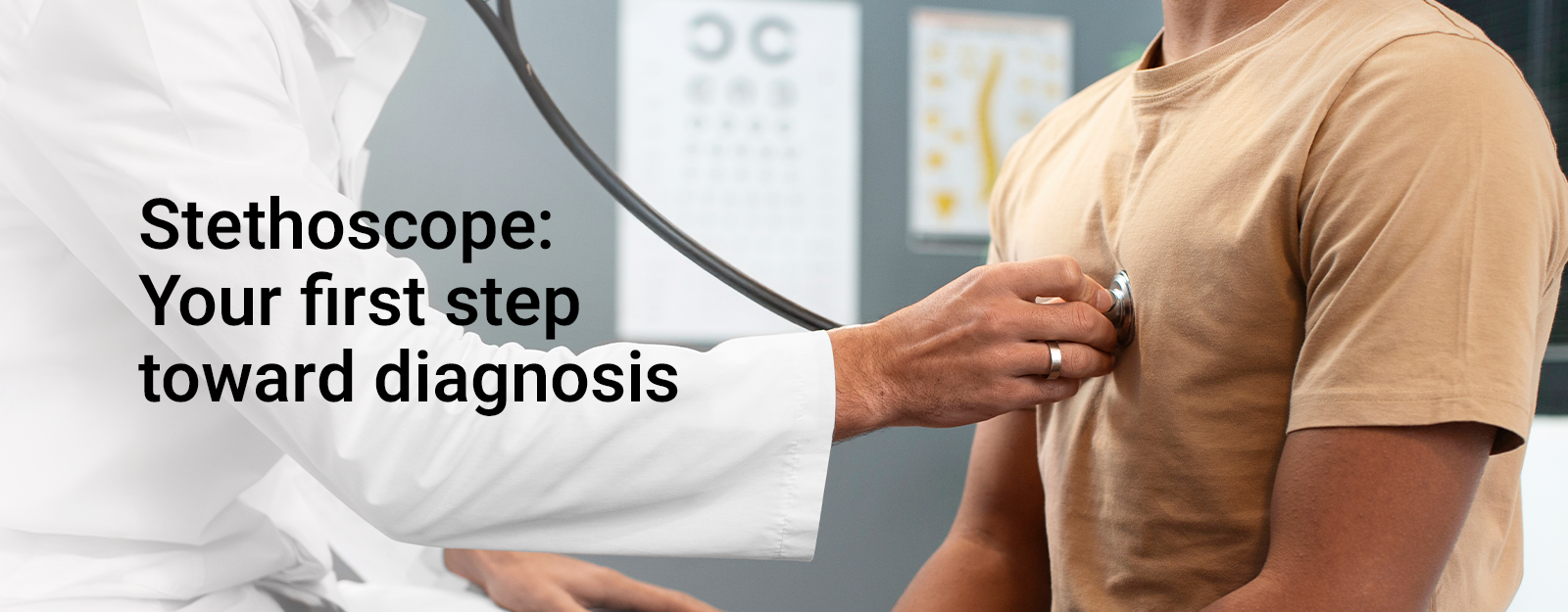The stethoscope is more than just an iconic medical instrument—it is a crucial link between a patient’s symptoms and an accurate diagnosis. Whether detecting heart murmurs, lung abnormalities, or gastrointestinal issues, it provides immediate insights that guide further medical investigation. Though modern technology continues to evolve, the stethoscope remains a fundamental tool in healthcare, embodying the essence of hands-on, compassionate medicine.
The Stethoscope as a Bridge Between Symptoms and Diagnosis
A patient’s symptoms—such as chest pain, shortness of breath, or a persistent cough—often provide only a partial picture of an underlying condition. The stethoscope allows physicians to explore these symptoms by directly assessing the body’s internal sounds. Here’s how it plays a crucial role in diagnosing various conditions:
Heart Sounds and Cardiovascular Diagnoses
The heart produces a rhythmic series of sounds as it pumps blood, and abnormalities in these sounds can indicate cardiovascular disease. Through auscultation, a doctor can detect:
-
Murmurs: Unusual whooshing sounds caused by turbulent blood flow, often indicating valvular heart disease.
-
Gallops: Additional heart sounds (S3 or S4) that may suggest heart failure or stiffened ventricles.
-
Pericardial Friction Rubs: A scratchy sound indicating pericarditis, an inflammation of the heart’s lining.
-
Arrhythmias: Irregular heartbeats that may suggest atrial fibrillation or other electrical conduction issues.
By correlating these auscultatory findings with symptoms like dizziness, chest pain, or fatigue, physicians can determine whether further diagnostic tests, such as an echocardiogram or electrocardiogram (ECG), are needed.
For healthcare professionals seeking accuracy and dependability, book your Knya's 6sense stethoscope and elevate your practice.
Lung Sounds and Respiratory Diagnoses
Auscultation of the lungs provides valuable information in diagnosing respiratory diseases. Physicians listen for specific breath sounds, including:
-
Wheezing: High-pitched sounds indicating airway obstruction, common in asthma and chronic obstructive pulmonary disease (COPD).
-
Crackles (Rales): Popping sounds heard during inhalation, often associated with pneumonia, pulmonary edema, or fibrosis.
-
Rhonchi: Low-pitched, snoring-like sounds that may indicate mucus buildup in conditions like bronchitis.
-
Diminished or Absent Breath Sounds: A sign of pneumothorax (collapsed lung) or pleural effusion (fluid accumulation around the lungs).
If a patient presents with cough, shortness of breath, or chest discomfort, the stethoscope helps narrow down potential respiratory conditions before ordering imaging tests like chest X-rays or CT scans.
Bowel Sounds and Gastrointestinal Diagnoses
Though less commonly associated with stethoscopes, auscultation of the abdomen provides crucial insights into gastrointestinal function. Physicians listen for:
-
Hyperactive Bowel Sounds: Suggesting diarrhea, gastroenteritis, or early intestinal obstruction.
-
Hypoactive or Absent Bowel Sounds: Indicating paralytic ileus (intestinal immobility) or bowel obstruction.
-
Bruits: Abnormal vascular sounds suggesting aneurysms or arterial blockages.
By assessing bowel sounds in conjunction with symptoms like abdominal pain, bloating, or nausea, doctors can determine whether further gastrointestinal investigations, such as an ultrasound or endoscopy, are necessary.
Blood Pressure Measurement and Vascular Health
Although many people associate the stethoscope with heart and lung auscultation, it is also essential for blood pressure measurement using a sphygmomanometer. The stethoscope helps detect Korotkoff sounds—sounds produced by blood flow turbulence in the arteries—to determine systolic and diastolic blood pressure.
Hypertension (high blood pressure) often presents with no symptoms but significantly increases the risk of stroke, heart attack, and kidney disease. Regular stethoscope-based blood pressure monitoring helps detect and manage hypertension early, bridging the gap between silent disease progression and timely intervention.
Express your style! Shop for our new6sense Stethoscope, now available in three stunning colors
The Stethoscope in Modern Medicine
Despite the rise of advanced diagnostic tools such as echocardiography, CT scans, and MRIs, the stethoscope remains an integral part of medical practice. Its benefits include:
-
Quick, Non-Invasive Assessment: Physicians can rapidly evaluate a patient’s condition without requiring expensive tests.
-
Portability: Unlike bulky diagnostic machines, a stethoscope is lightweight and accessible.
-
Bedside Decision-Making: In emergency settings, it allows immediate assessment and triage.
-
Cost-Effective Screening: It helps identify potential health issues before proceeding to costly imaging or laboratory tests.
Additionally, digital and AI-assisted stethoscopes now enhance diagnostic capabilities by filtering background noise, amplifying sounds, and providing real-time visual representations of heart and lung sounds. These advancements improve accuracy and enable remote auscultation, especially in telemedicine settings.













